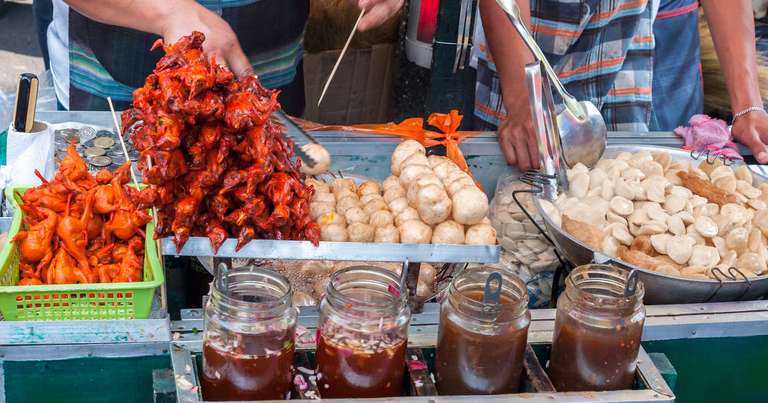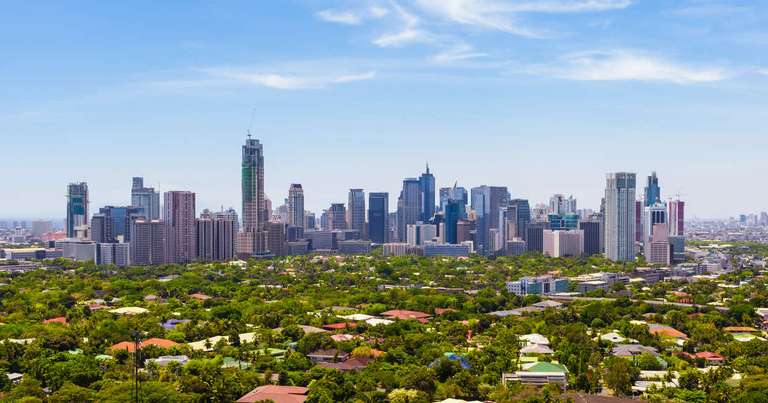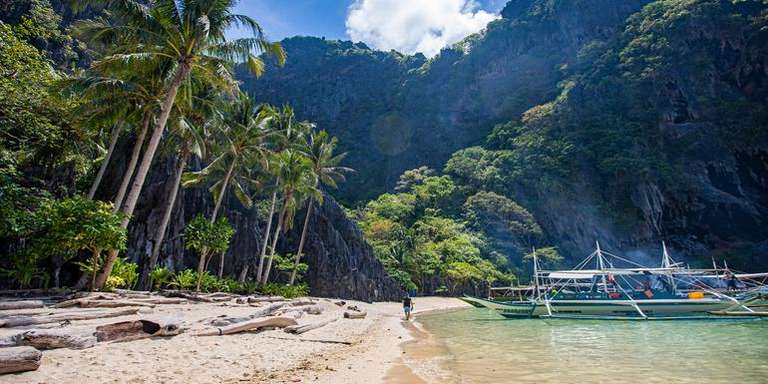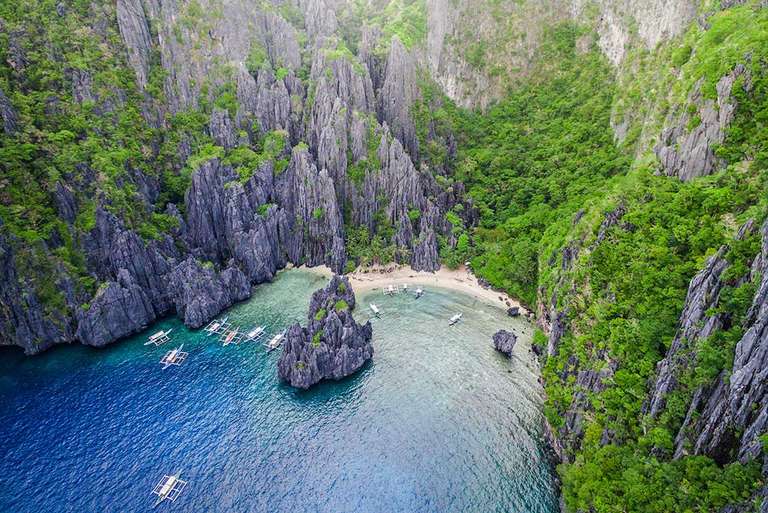Best Time to Visit the Philippines
- Excellent
- Good
- Fair
- Poor
- JanAvg Daily: 30 ° CAvg Nightly: 21 ° C
- FebAvg Daily: 31 ° CAvg Nightly: 22 ° C
- MarAvg Daily: 32 ° CAvg Nightly: 23 ° C
- AprAvg Daily: 34 ° CAvg Nightly: 24 ° C
- MayAvg Daily: 34 ° CAvg Nightly: 25 ° C
- JunAvg Daily: 32 ° CAvg Nightly: 24 ° C
- JulAvg Daily: 31 ° CAvg Nightly: 24 ° C
- AugAvg Daily: 30 ° CAvg Nightly: 24 ° C
- SepAvg Daily: 31 ° CAvg Nightly: 24 ° C
- OctAvg Daily: 31 ° CAvg Nightly: 24 ° C
- NovAvg Daily: 31 ° CAvg Nightly: 23 ° C
- DecAvg Daily: 30 ° CAvg Nightly: 22 ° C
- Excellent
- Good
- Fair
- Poor
- Michelle Snarey
- From United Kingdom
- Michelle Snarey
- From United Kingdom
- Sinead
- From United Kingdom
- Dominic Yates
- From United Kingdom
When is The Best Time to Visit The Philippines: QUICK FACTS
| High season | Dry season—January to May |
| Low season | Monsoon season—June to October |
| All season | Dry season—January to May, Shoulder season—November to December, Monsoon season—June to October |
When to Visit The Philippines: SEASONAL OVERVIEW
To know the best time to visit the Philippines, read below:
Dry Season in The Philippines — January to May
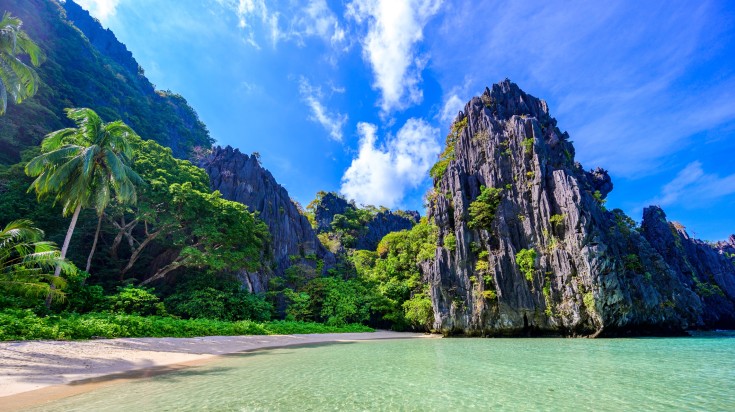
The best time to travel to the Philippines is during the dry season (January to May) when you can expect plenty of sunshine and minimal rain. This near-perfect weather makes it the ideal time for surfing, snorkeling, island-hopping, and exploring stunning tropical landscapes. Expect daily highs of around 30°C (85°F) from January to March and 32°C (90°F) in April and May. In the main island of Luzon, rainfall ranges from 13 millimeters to 33 millimeters per month (March and April are slightly drier). The best time to visit Manila is from December to February. As for the Visayas? The region sees much more rain during this season, anywhere from 20mm to 110mm.
| Average temperatures | 30°C (85°F) to 33°C (91°F) |
| Average monthly rainfall | 10–20 millimeters (more in the Visayas) |
| Is the dry season a good time to go to the Philippines? |
Yes. Clear sunny days and infrequent rain make this season ideal for outdoor adventures. These are some of the best months to visit the Philippines. |
Highlights:
- Hike the gorgeous rice terraces of Banaue in Luzon, which remain lush and green in January.
- Snorkel with majestic whale sharks near the town of Oslob—aim for February to April.
- Jump on an island-hopping tour to explore paradise-like landscapes in El Nido, Palawan.
Travel tips:
- Book your flights early because prices will rise rapidly during the busier months (January to February).
Shoulder Season in The Philippines — November to December

November to December is the shoulder season in the Philippines, which means intermittent cloud and moderate rain. The Visayas is a little less wet than the northern island of Luzon, with an average monthly rainfall of 110 millimeters. Although not ideal, it’s generally dry enough to sneak in some fun-filled island activities. Average peak daytime temperatures are around 30°C (85°F).
| Average temperatures | 30°C (86°F) |
| Average monthly rainfall | 110 millimeters |
| Is the shoulder season a good time to go to the Philippines? |
Yes. Fewer tourists make up for the moderate rainfall. |
Highlights:
- Scale Mount Pulag at dawn to see a sea of clouds stretch over the horizon—the cooler weather is ideal.
- Dive deep into the Apo Reef and enjoy idyllic underwater conditions.
- Kick back on a pristine beach in Siargao, or grab a surfboard and ride some waves.
Travel tips:
- Christmas is a festive season in this predominantly Christmas country, and it also sees greater travel demand. So plan your trip accordingly.
Monsoon in The Philippines — June to October

The weather in the Philippines during the monsoon season (June to October) entails heavy rains of up to 450 millimeters per month (October). June remains relatively dry, with an average monthly rainfall of 130 millimeters, although it gets notoriously hot and muggy. The Visayas archipelago (home to Cebu and many other islands) has a slightly shorter monsoon from July to October. The region receives far less rainfall in its wet season, usually between 100 and 200 millimeters per month. However, island hopping isn’t advised as the swell becomes rough in the wet season. July to October is the peak time for typhoons, which can batter the coastline at short notice and cause significant damage.
| Average temperatures | 30°C (86°F) to 34°C (93°F) |
| Average monthly rainfall | 150–450 millimeters |
| Is the wet season a good time to go to the Philippines? |
No. The heavy rains, rough seas, and typhoons are far from ideal. |
Highlights:
- Shop ’til you drop (and escape the rain) in one of Manila’s numerous malls.
- Cruise down Palawan’s beautiful Subterranean River—the wet season sees it bulge.
Travel tips:
- Keep a close eye on the typhoon forecast and avoid traveling in small boats during rough seas.
The Philippines is very much a seasonal destination. Most visitors arrive during the dry season (January to May) for its beautiful sunny days and rare rainfall. Visitor numbers tumble during the wet season, when you should expect heavy downpours, big swells, and even typhoons.
Need more travel info? Find out how many days to spend in the Philippines or other nifty travel tips in our Philippines travel guide. We also offer a broad range of customized tours to the Philippines and beyond.
Weather in The Philippines: Rainfall and Temperatures
| Month | JAN | FEB | MAR | APR | MAY | JUN | JUL | AUG | SEP | OCT | NOV | DEC |
| Avg Daily (°C) | 30 | 31 | 32 | 34 | 34 | 32 | 31 | 30 | 31 | 31 | 31 | 30 |
| Avg Nightly (°C) | 21 | 22 | 23 | 24 | 25 | 24 | 24 | 24 | 24 | 24 | 23 | 22 |
| Avg Daily (°F) | 86 | 88 | 90 | 94 | 94 | 90 | 88 | 86 | 88 | 88 | 88 | 86 |
| Avg Nightly (°F) | 70 | 72 | 74 | 76 | 77 | 76 | 76 | 76 | 76 | 76 | 74 | 72 |
| Avg Rainfall (mm) | 10 | 10 | 10 | 20 | 60 | 90 | 120 | 140 | 110 | 80 | 50 | 20 |






